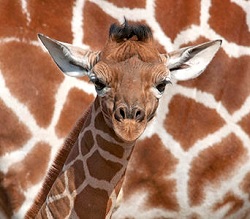Jan 05, 2026
Jan 05, 2026
A United Nations report says 1 million plant and animal species are at risk of extinction, many within decades, because of human activity. Scientists said species are going extinct up to several hundred times faster than the average rate during the past 10 million years. There are currently 8 million animal and plant species on Earth.
On average, over 1,000 rhinos are slaughtered a year, 55 African elephants are killed a day and every five minutes a pangolin is snatched from the wild.
 Wildlife crime is dead serious. Wildlife crime is happening all over the world estimated to be worth over £15 billion a year, with seizure data showing almost 7,000 species are affected. Giraffes are also critically endangered. Many people, including conservationists, remain unaware that the world’s tallest animal is experiencing a silent slide towards extinction.
Wildlife crime is dead serious. Wildlife crime is happening all over the world estimated to be worth over £15 billion a year, with seizure data showing almost 7,000 species are affected. Giraffes are also critically endangered. Many people, including conservationists, remain unaware that the world’s tallest animal is experiencing a silent slide towards extinction.
Two giraffe subspecies have been listed as Critically Endangered by the International Union for Conservation of Nature (IUCN) Red List of Threatened Species for the first time.
Giraffe population fallen by a shocking 40% in the last three decades, and less than 100,000 remain today. Habitat loss through expanding agriculture, human-wildlife conflict, civil unrest, and poaching for their meat, pelts, and tails, are among the reasons for the deterioration.
Three of the presently familiar nine subspecies were listed as critically endangered or endangered on the latest IUCN Red List. Those subspecies in East, Central, and West Africa are coping predominantly poorly: the Kordofan and Nubian giraffes, with respectively 2,000 and 2,645 individuals remaining, are now just one stage from Extinct in the Wild.
The Reticulated, Thornicroft’s and West African giraffes are also listed as Endangered or Vulnerable. Although these new listings sound the alarm, there is reason for hope. In the past few decades, the Giraffe Conservation Foundation towed the West African giraffe back from the edge of extinction.
Giraffes are in serious trouble. The population overall has declined 40 percent in 30 years, and there are now approximately 68,000 left in the wild. The residual herds are fragmented and face a multitude of extortions, from habitat loss to stealing.
The International Union for Conservation of Nature (IUCN), the gold standard for assessing endangerment, has found that giraffes are “vulnerable,” meaning they face a “high risk” of extinction in the wild. And for some of the nine subspecies, this risk is imminent. For example, the Kordofan giraffe has lost 90 percent of its population since the late 1980s and is down to just 2,000 individuals in the wild. Similarly, the Nubian giraffe population is down 98 percent and lives only on protected lands in Kenya. According to the IUCN, both subspecies are “critically endangered,” which means they face an “extremely high risk” of extinction in the wild.
US trade plays a significant threat to the species. Between 2006 and 2015, 39,516 giraffe specimens, including dead and live animals, as well as their parts or derivatives, were imported into the United States, according to the 2017 petition.
That includes 21,402 bone carvings, 3,008 skin pieces and 3,744 hunting trophies. The conservation groups arrived at that number using the US Fish and Wildlife Service’s data on wildlife products and a review of online sales of giraffe products.
Now it’s time of action for survival of this humble creation by adopting few sustainable steps like; Support sustainable cultivation and farming practices near giraffe habitats. Reforest key areas with acacia trees that provide giraffes' main food source. Stop the poaching of giraffes for their tails, considered status symbols. Solve hunger in areas like Sudan where impoverished villagers eat giraffe meat.
28-Sep-2019
More by : Dr. Naseem Sheikh